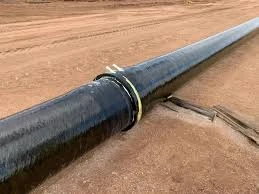
-
 Afrikaans
Afrikaans -
 Albanian
Albanian -
 Amharic
Amharic -
 Arabic
Arabic -
 Armenian
Armenian -
 Azerbaijani
Azerbaijani -
 Basque
Basque -
 Belarusian
Belarusian -
 Bengali
Bengali -
 Bosnian
Bosnian -
 Bulgarian
Bulgarian -
 Catalan
Catalan -
 Cebuano
Cebuano -
 China
China -
 China (Taiwan)
China (Taiwan) -
 Corsican
Corsican -
 Croatian
Croatian -
 Czech
Czech -
 Danish
Danish -
 Dutch
Dutch -
 English
English -
 Esperanto
Esperanto -
 Estonian
Estonian -
 Finnish
Finnish -
 French
French -
 Frisian
Frisian -
 Galician
Galician -
 Georgian
Georgian -
 German
German -
 Greek
Greek -
 Gujarati
Gujarati -
 Haitian Creole
Haitian Creole -
 hausa
hausa -
 hawaiian
hawaiian -
 Hebrew
Hebrew -
 Hindi
Hindi -
 Miao
Miao -
 Hungarian
Hungarian -
 Icelandic
Icelandic -
 igbo
igbo -
 Indonesian
Indonesian -
 irish
irish -
 Italian
Italian -
 Japanese
Japanese -
 Javanese
Javanese -
 Kannada
Kannada -
 kazakh
kazakh -
 Khmer
Khmer -
 Rwandese
Rwandese -
 Korean
Korean -
 Kurdish
Kurdish -
 Kyrgyz
Kyrgyz -
 Lao
Lao -
 Latin
Latin -
 Latvian
Latvian -
 Lithuanian
Lithuanian -
 Luxembourgish
Luxembourgish -
 Macedonian
Macedonian -
 Malgashi
Malgashi -
 Malay
Malay -
 Malayalam
Malayalam -
 Maltese
Maltese -
 Maori
Maori -
 Marathi
Marathi -
 Mongolian
Mongolian -
 Myanmar
Myanmar -
 Nepali
Nepali -
 Norwegian
Norwegian -
 Norwegian
Norwegian -
 Occitan
Occitan -
 Pashto
Pashto -
 Persian
Persian -
 Polish
Polish -
 Portuguese
Portuguese -
 Punjabi
Punjabi -
 Romanian
Romanian -
 Russian
Russian -
 Samoan
Samoan -
 Scottish Gaelic
Scottish Gaelic -
 Serbian
Serbian -
 Sesotho
Sesotho -
 Shona
Shona -
 Sindhi
Sindhi -
 Sinhala
Sinhala -
 Slovak
Slovak -
 Slovenian
Slovenian -
 Somali
Somali -
 Spanish
Spanish -
 Sundanese
Sundanese -
 Swahili
Swahili -
 Swedish
Swedish -
 Tagalog
Tagalog -
 Tajik
Tajik -
 Tamil
Tamil -
 Tatar
Tatar -
 Telugu
Telugu -
 Thai
Thai -
 Turkish
Turkish -
 Turkmen
Turkmen -
 Ukrainian
Ukrainian -
 Urdu
Urdu -
 Uighur
Uighur -
 Uzbek
Uzbek -
 Vietnamese
Vietnamese -
 Welsh
Welsh -
 Bantu
Bantu -
 Yiddish
Yiddish -
 Yoruba
Yoruba -
 Zulu
Zulu
Difficulties Encountered When Drilling Through Limestone Layers in Construction Projects
Drilling Through Limestone The Challenges and Considerations
Drilling through limestone is a task that presents unique challenges for engineers and operators in the construction and mining industries. Limestone, a sedimentary rock composed primarily of calcium carbonate, is known for its durability and resilience, but these same characteristics can complicate drilling operations. Understanding the intricacies involved in drilling through limestone is essential for successful project execution.
One of the primary challenges encountered when drilling through limestone is its varying hardness. Limestone can display a range of hardness levels depending on its composition and the conditions under which it formed. This variability makes it difficult to predict the amount of force and drilling speed required for effective penetration. Operators often find themselves adjusting their techniques on-the-fly, which can lead to inefficiencies and longer project timelines.
Another significant challenge is the presence of fissures and voids within the limestone. These natural imperfections can cause unpredictable drilling conditions. For instance, when a drill encounters a cavity, it may become stuck or experience rapid wear, necessitating the use of additional tools or techniques to navigate the obstacle. This unpredictability can result in increased costs and project delays, which are critical considerations for any drilling operation.
drilling through limestone is challenging.

Furthermore, the drilling process itself can produce a significant amount of dust and debris. Limestone, when drilled, creates fine particles that can hinder visibility and pose respiratory risks to workers on site. Implementing effective dust control measures, such as using water during drilling or utilizing specialized dust suppression technologies, becomes essential to ensure worker safety and compliance with environmental regulations.
The choice of drilling equipment is also crucial when working with limestone. Not all drill bits are suited for this type of rock; therefore, selecting the appropriate tool is imperative. Carbide-tipped or diamond-coated drill bits are often recommended for their ability to handle the hardness and abrasiveness of limestone. However, these bits can be more expensive, adding another layer of consideration for budget-conscious projects.
In addition to these technical challenges, there are environmental considerations to address. Drilling through limestone can imperil local ecosystems, particularly if groundwater sources are affected. Limestone formations are often associated with aquifers, and any drilling activities run the risk of contaminating these vital water supplies. Therefore, it's important for drilling companies to conduct thorough environmental impact assessments before beginning their operations.
In conclusion, while drilling through limestone is certainly challenging, it is not insurmountable. With proper planning, the right equipment, and an understanding of the geological conditions, engineers and operators can navigate these obstacles effectively. Ongoing training and the use of modern drilling technologies can further enhance the efficiency and safety of limestone drilling projects. As industries continue to expand and require deeper exploration, the knowledge and expertise in handling limestone drilling will remain invaluable.
Latest news
-
Exploring the Benefits of Top Hammer Drifter Rods for Enhanced Drilling PerformanceNewsJun.10,2025
-
High-Precision Fiberglass Winding Machine for GRP/FRP Pipe Production – Reliable & Efficient SolutionsNewsJun.10,2025
-
FRP Pipes & Fittings for Shipbuilding - Corrosion-Resistant & LightweightNewsJun.09,2025
-
Premium FRP Flooring Solutions Durable & Slip-ResistantNewsJun.09,2025
-
Premium Fiberglass Rectangular Tanks Durable & Lightweight SolutionNewsJun.09,2025
-
Tapered Drill String Design Guide Durable Performance & UsesNewsJun.09,2025









